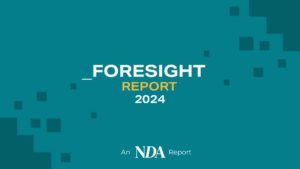By Alexander Hawkesworth, Head of Platform Data Technology Solutions, Fifty
The digital marketing industry is in a state of flux.
Concerns around data privacy have led governments, regulators and tech giants to introduce an increasing number of restrictions to the ways that marketers can collect, store and share customer data and target consumers with digital advertising.
With traditional tracking and attribution methods being overhauled in the new ‘privacy-first’ world, contemporary marketers are faced with a choice: do I continue to track my consumers IF they choose to let me?
Or do I, instead, look to a scalable, human-focused means of better understanding my target audience and where to reach them effectively without tracking?
Most marketers, at heart, want to do the right thing and embrace the principles of privacy-first marketing but often they are unsure of how to achieve that, given their current dependence on cookie or digital ID-based methods of tracking, targeting and attribution. All too often, there’s no clear roadmap to help them move from one approach to the other.
A shift in mindset
In most cases, the major change that needs to happen is a shift in mindset around marketing itself. One of the key reasons that digital marketing has become so popular over the past two decades is that its outcomes are highly measurable in a way that traditional media channels like TV, radio and print media are not.
This has led to a modern-day obsession among contemporary marketers with every penny spent being associated with an attributable metric. This singular obsession means that many digital campaigns miss out the influence and consideration stages on the consumer’s buying journey and fail to build awareness. Digital as a channel has been pigeon-holed as means to a conversion when it is actually capable of so much more in nurturing and guiding customers through the sales funnel.
At my own company, Fifty Technology, our attitude is that we step away from all forms of digital identifiers in how we identify and target audiences. This doesn’t simply mean avoiding third-party cookies, it means rejecting the use of any identity identifiers in targeting a human audience – we don’t need them to drive effective campaigns.
We believe that audience targeting solutions based on mobile IDs, Cookie IDs and even IP addresses are living on borrowed time. The likelihood is that the use of those are going to be significantly degraded, considered questionable or banned altogether over the next five years. Rather than skirt close to the edges of the latest regulations or tech policies (who remembers the frantic ITP rearguard action?) it’s time for marketers to embrace the privacy-focused era and significantly enhance their understanding of their current and future customers in the process.
In 2021, there are lots of new privacy-compliant data sources out there, lots of new ways of understanding people, and lots of ad inventory sources that are becoming more sophisticated than ever in terms of how they segment their audience base.
It’s time for marketers to reverse out of the Orwellian nightmare, adapt how they measure success and get back to their core mission: understanding human beings better.
An evolving situation
But wait a minute? Understanding human beings?
Given the obsession with data mentioned above, any decent ecommerce brand retailer already has a wealth of data about how consumers (represented as IDs and PII records) interact with their companies. They track what they buy and when they buy it. They model existing customers’ lifetime value, their churn, and try to guess what product they can sell them next.
And while these identifiers allow them to measure and report every microtransaction they provide a very slim insight into who those people really are; their motivations, values and passions.
And let’s be honest – advertising, at its heart, is about human attention and motivation, not identifiers and tracking.
Our mission at Fifty is to bring an enrichment of audience understanding to help make everything about marketing better. When you understand an audience’s interests and passions you know how to communicate in a way that engages and motivates them. It makes the planning better, it makes the targeting better and it makes the creativity more tailored; all without needing to be Big Brother.
However, as mentioned previously, we are living through a time of great change. Alongside the changes taking place within their industry, marketers have the added challenge right now of trying to understand their customers in an evolving situation. Post-pandemic, consumer behavior has altered significantly and is continuing to change on a daily basis. How do you understand who your audience is and where your growth is going to come from when the sands are shifting so rapidly beneath your feet? You can’t do a focus group or a survey on something that’s constantly evolving. You need to measure live data over time and you need to do it at scale for the measurement to be robust and comparable.
So, given the increased restrictions on tracking customers, where are you going to get the data you need?
Social data holds the key
At Fifty, we began life as a social analytics and insights company. Our core expertise is and always has been finding gold among privacy-compliant social data – hidden insights that others wouldn’t see. Today, we work with our clients to directly activate those insights into marketing campaigns across multiple channels or to reveal new audiences yet to be addressed.
Simply put, we use our expertise in social data to identify, analyse, understand and classify specific groups of people and find the audiences our clients want to reach. We then match online advertising inventory to those audiences.
We’ve developed the ability to recognise and understand people using the wealth of data within our social data set. We use predominantly public domain social data to understand the different human ‘tribes’ that interconnect around organic topics, how they change and grow and all in an accessible and interactive UI (data scientist optional). This allows Fifty to identify things that motivate them as a group (or in our language Tribe) by understanding the topics and categories that they collectively engage with.
Once we understand the core interests and passions, we create a map of where that tribe can be found across the digital ecosystem at any given time. We can identify and locate specific audiences in situations unique to them rather than ‘noisy’ situations where there’ll be lots of other types of people around. The underlying data is refreshed daily allowing this map to change with the audience.
As the popularity of social media as an advertising platform grew, we recognised the value of our insights to the marketing community and developed our own media buying proposition – FiftyAurora is the latest iteration of this; one built for an era of privacy. This makes us a very different proposition to an established media company or platform that bolted-on a ‘social insights’ offering to its suite of products along the way.
We know from experience that many companies work to gain social insights then struggle to know what to do with them, i.e. how to utilise those insights to build an effective ad or campaign. Fifty’s biggest differentiator is how we understand and use social data. We can translate the full power of social into campaigns across multiple channels, bridging the gap between planning, strategy and insight, directly into activation.
The spaces in-between
The key challenges for marketers right now, are establishing a balance within their marketing tech’ stack and finding solutions that allow them to target, measure and optimise without compromising consumer privacy.
As a result, every brand in the world right now is focused on how it can utilise first-party data. While opted-in first party data is ideal in many ways, it won’t be available at the scale most marketers need. Another option will be contextual plays, which target campaigns purely based on the keywords in certain types of content.
At Fifty, we believe our approach sits comfortably between the contextual space and the first-party space: we can provide the scale that is lacking from first party data, because consent is not needed, but we also have the ability to model and understand the audience not just the content, which represents an evolution in the contextual space. Our targeting even allows us to reach Safari and Firefox users, who aren’t being reached programmatically right now (a problem that we’ll address in a moment).
In essence, we’ve created a scalable ID-free, privacy-compliant, audience targeting solution. Our core strength lies in identifying specific audiences aligned to the interest of a particular brand or product. We can very easily access a data set of over 65,000+ tribes within our library, running across every existing vertical (and even some new ones). We can run a bespoke study in half-a-day and activate a campaign based on real-time social data insights within 24 hours.
We’re focused on finding people rather than digital identifiers. Often, when we run a study, we look at an audience that a brand had previously been addressing as a singular homogenous group. We then break it down into different groups of people, or tribes, looking at the things that connect them as a ‘set of interest’ for a product or campaign.
By understanding those subgroups and looking at their secondary interests, the things that define those demographics, we often find some unique audiences that weren’t apparent or intuitive to start with. The ability to identify audiences not found in third-party taxonomies and inform the messaging most relevant to that group before a single piece of creative has been developed is an advantage only found at Fifty. We can see the products and topics your target customers are discussing right now and dynamically insert them into your campaign creative.
The future is now
While the marketing press tends to focus on future restrictions to cookies and digital identifiers, one thing that isn’t discussed as often is that a large portion of online consumers are already non-addressable. As mentioned above, anyone using ‘third-party-cookie-free’ browsers such as Firefox and Safari or accessing mobile data via iOS 14.5 is currently out of reach when it comes to attribution. As a result, millions of very valuable consumers use those platforms every day to make conversions that simply aren’t being measured.
This has a knock-on detrimental effect on a business’s marketing strategy and ROI, as some media buying and activation platforms will optimize away from those non-addressable environments and lose out on the valuable customers who are found there.
At Fifty, because our solution doesn’t rely on IDs and is, instead, based on our understanding of humans and the online content they are likely to visit, we aren’t limited to a specific technological environment. This allows us to work with activation platforms, agencies and brands to help them to reach and convert customers currently beyond their reach.
My message to under-pressure CMOs is to join us in stepping back from simply rebuilding the cookie and embrace the potential of social data to discover target audiences that you never knew existed. By putting human beings, rather than cookies and IDs at the centre of your thinking, your campaigns will be protected against whatever challenge the world wants to throw at marketers next.









